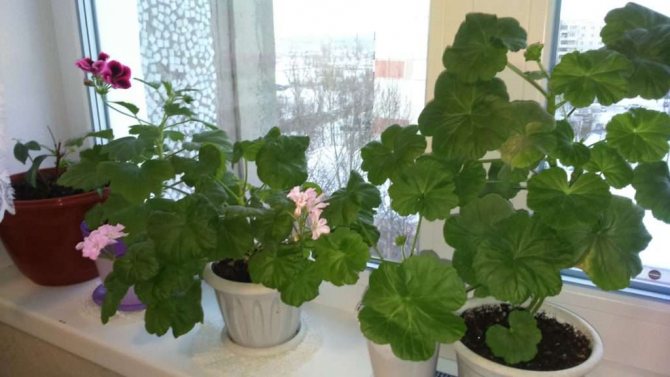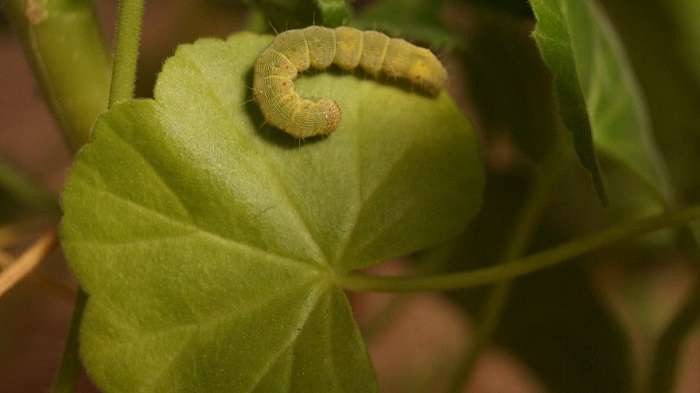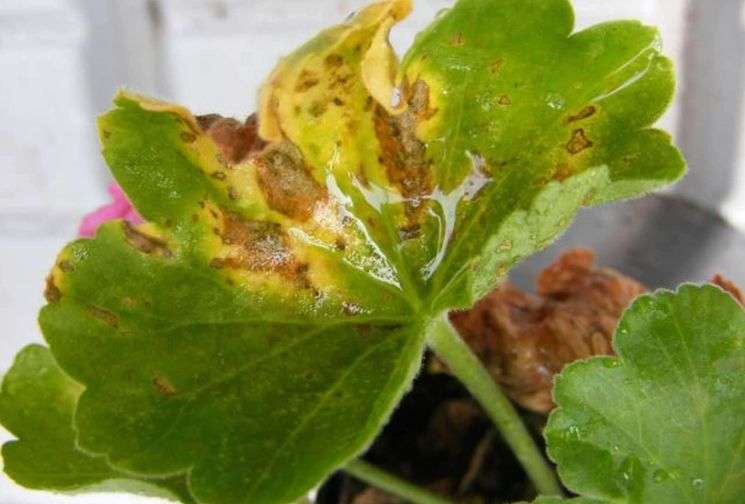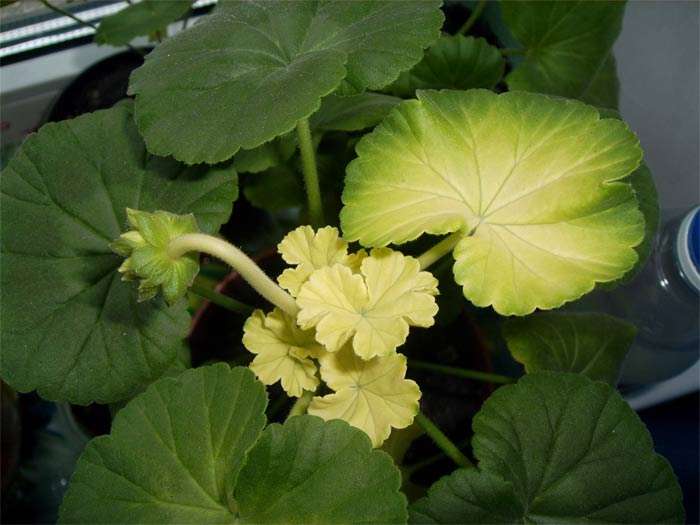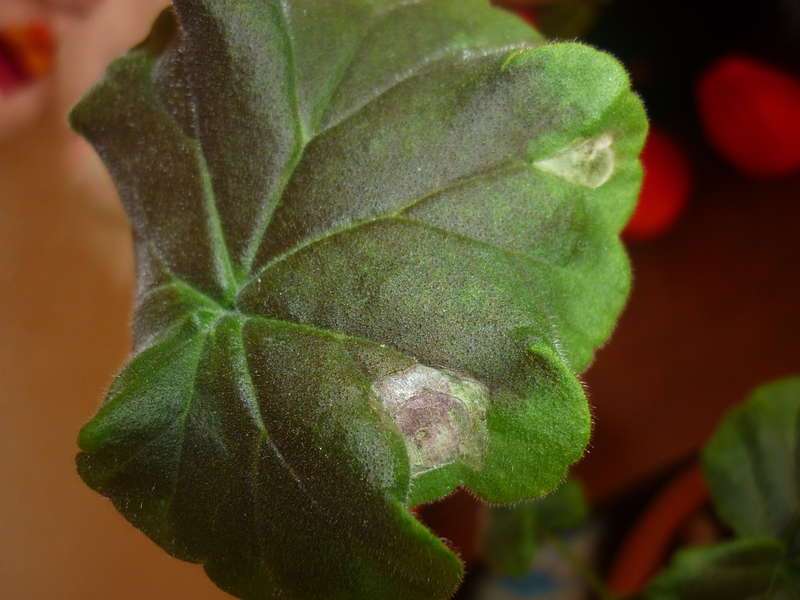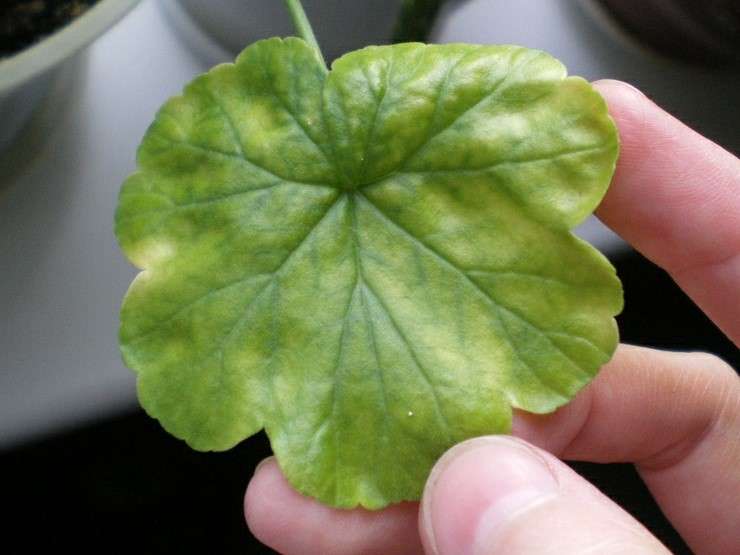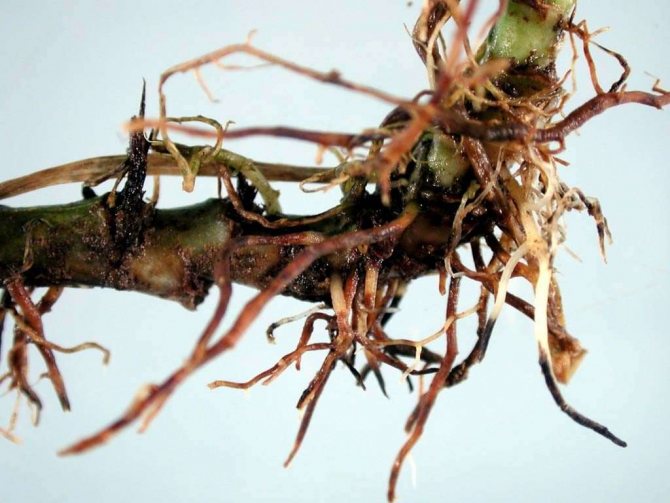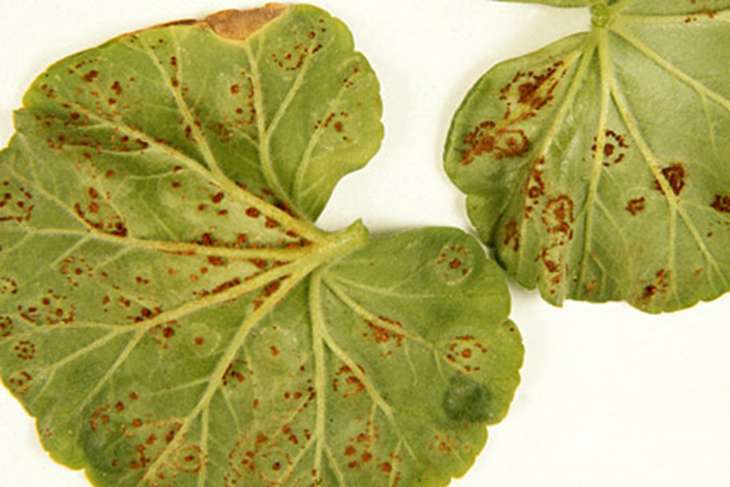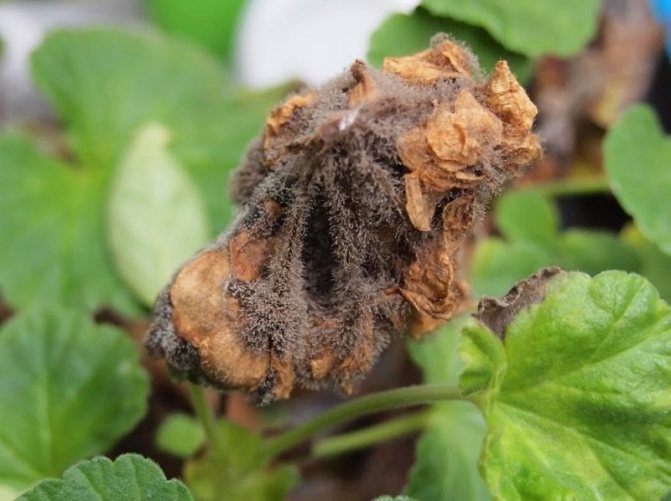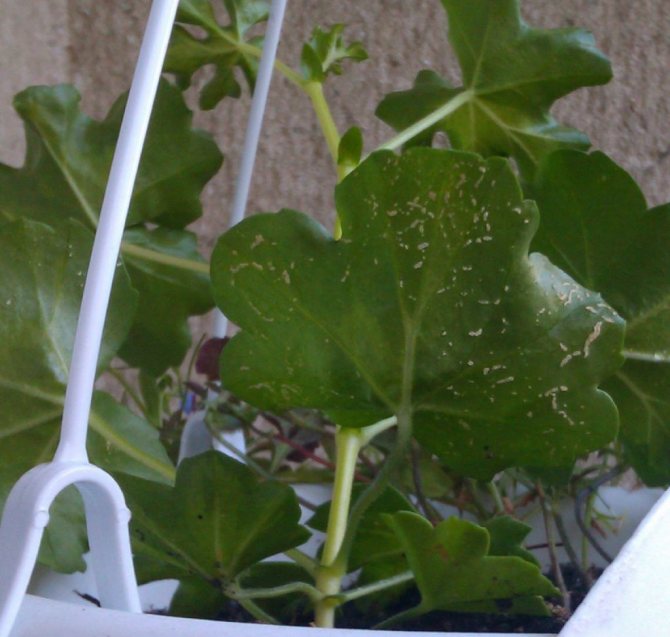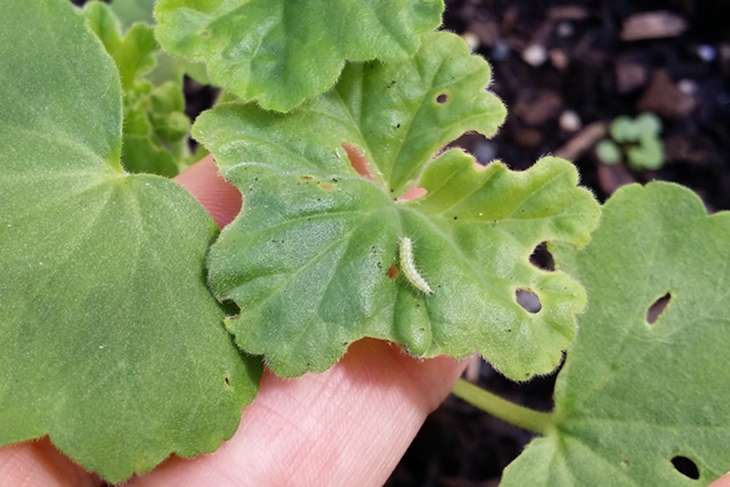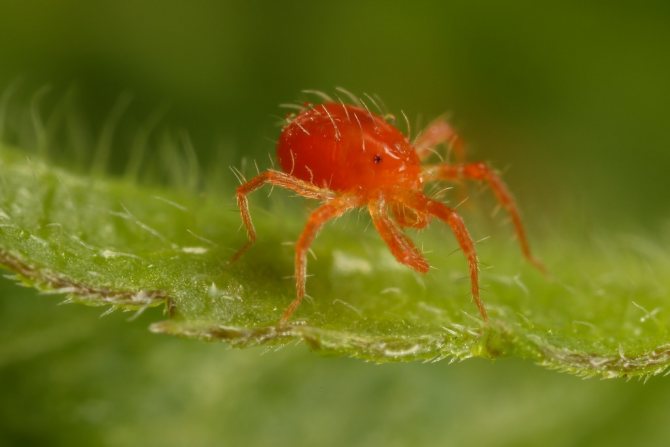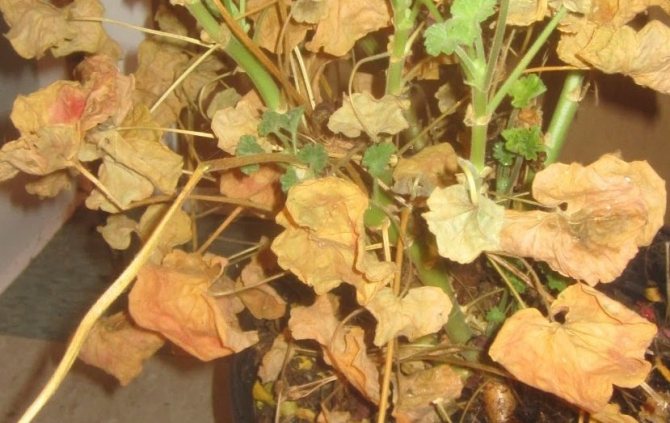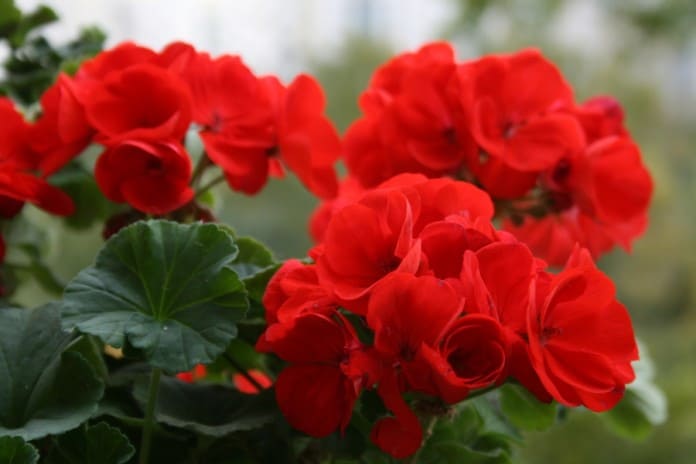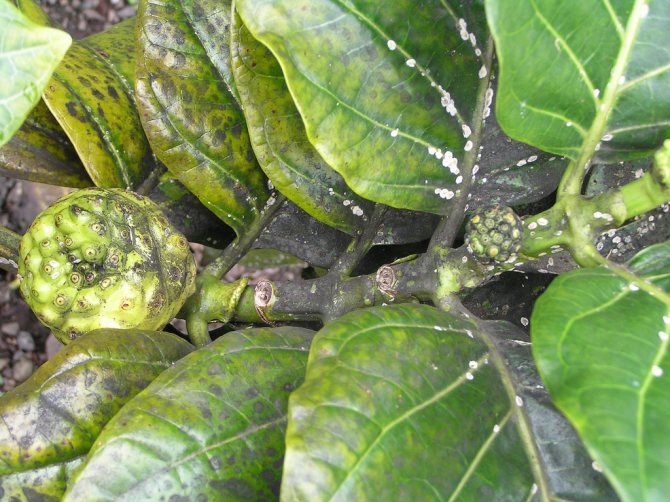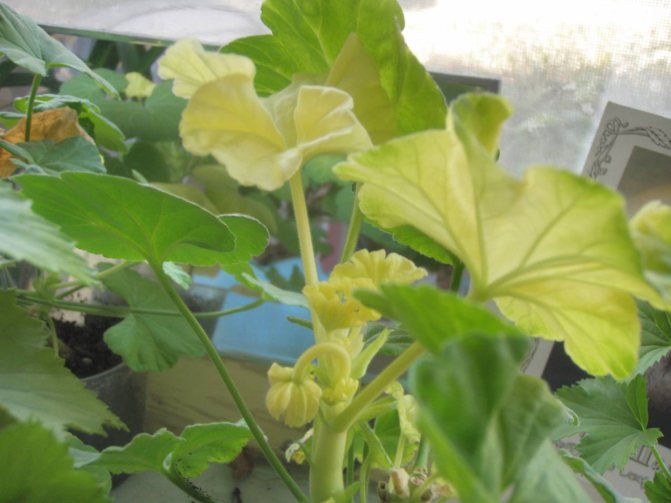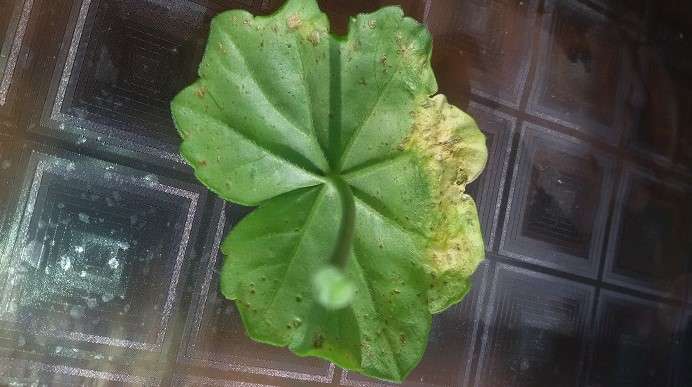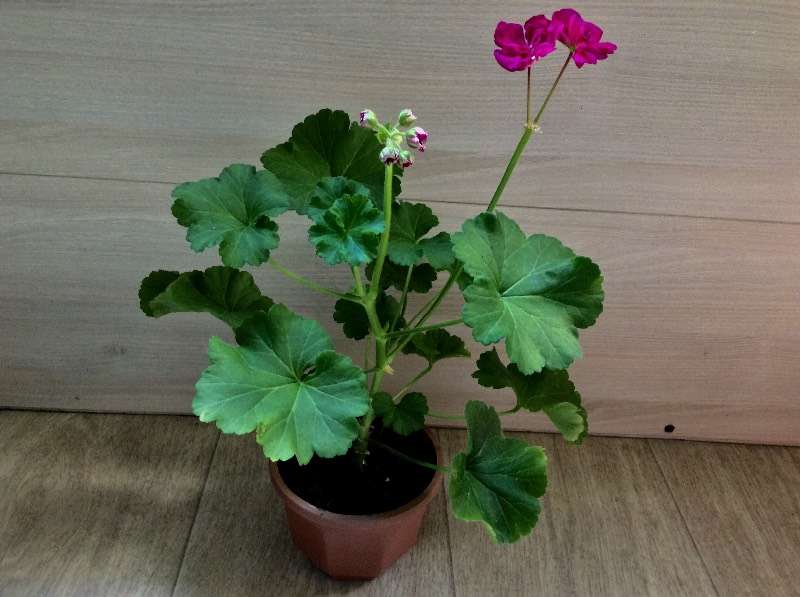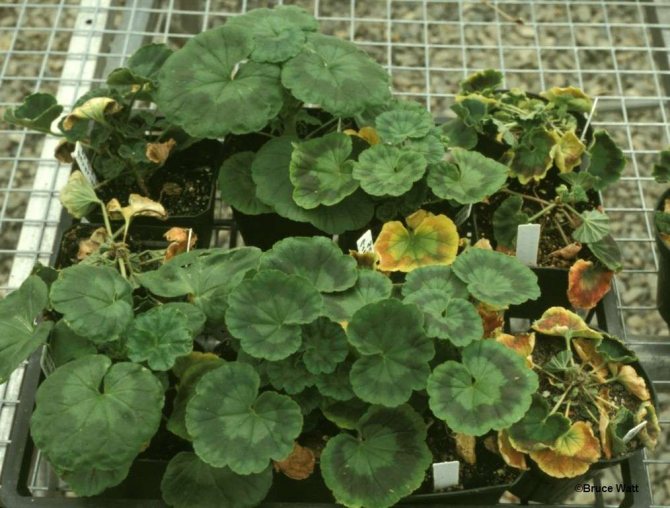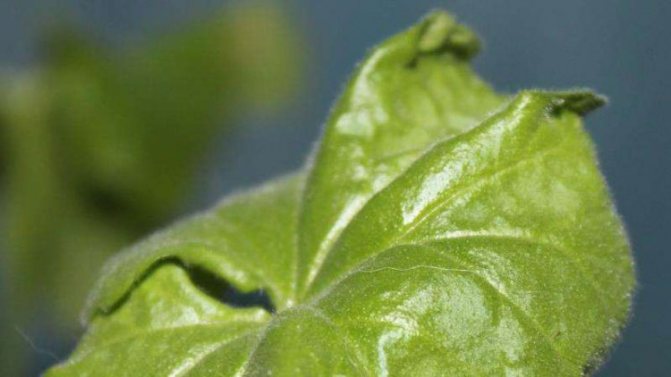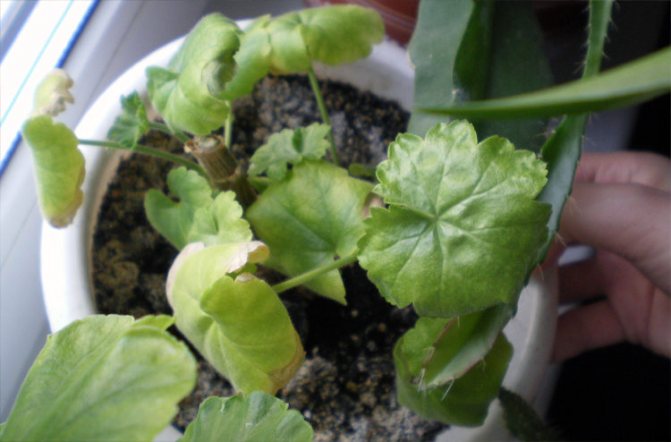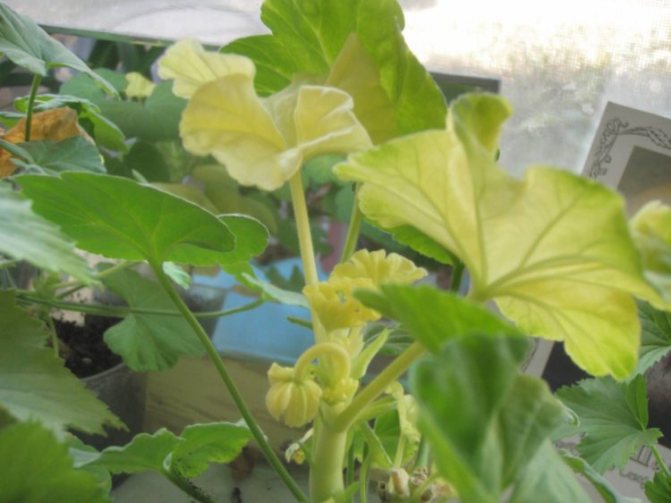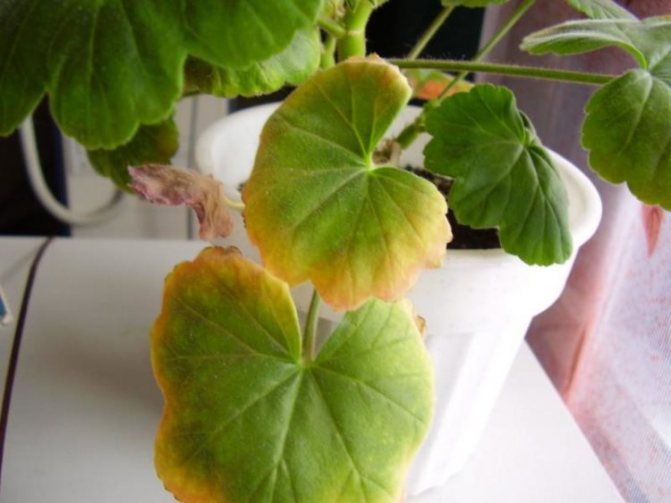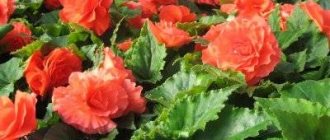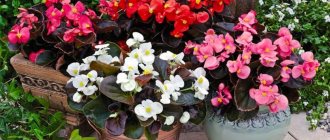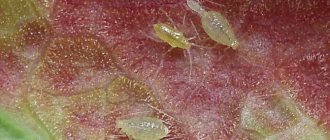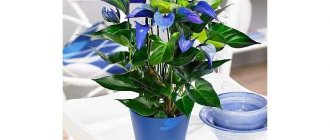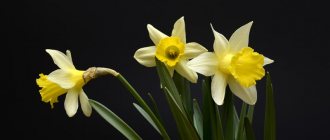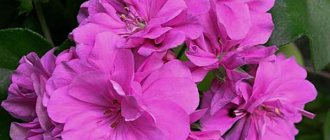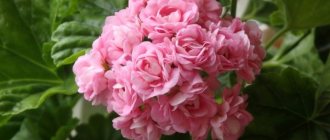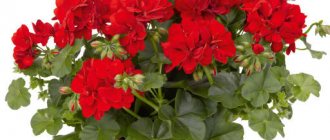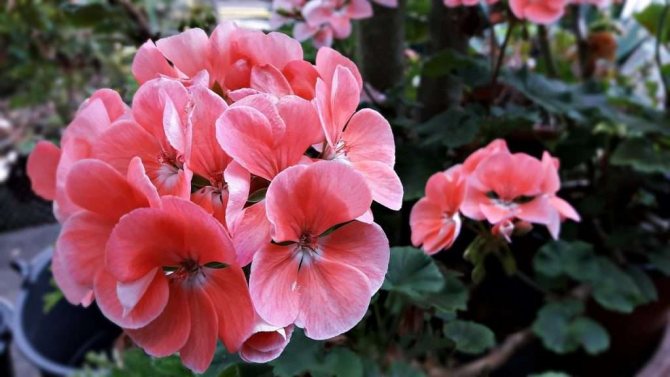
Almost all growers call pelargonium from the geranium family room geranium. There is also street geranium, which differs from pelargonium in the shape of leaves and flowers, resistance to frost, breeding method and habitat. The difference between pelargonium and geranium can be found on our website from the article "What is the difference between geranium and pelargonium".
Indoor and outdoor geraniums are always dotted with flowers that grow alternately and emit an aroma that cannot be confused with the smell of other flowers. Their leaves are also endowed with a special aroma. In this regard, both plants are used by the cosmetic industry to obtain essential oils. but these plants should not be left unattended during development, vegetation and flowering, as they may be susceptible to disease and damage from pests.
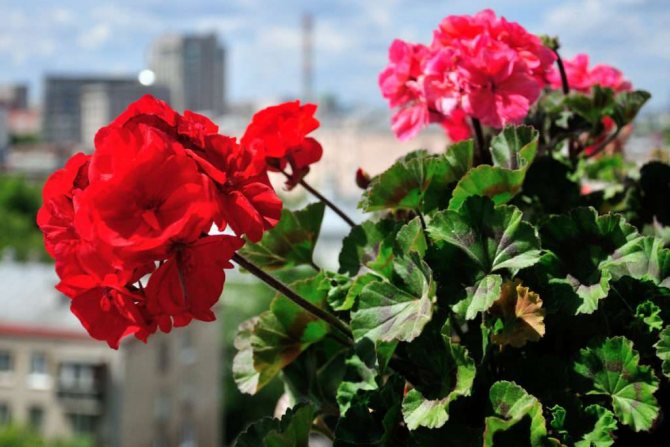

But geranium diseases (see photo) and their treatment are similar for both indoor and outdoor representatives. This will be discussed in detail in this article, as well as measures to prevent diseases.
Signs of chlorosis
Chlorosis is not a fatal disease, it can be easily cured if the characteristic symptoms are seen in time.
A diseased culture can be easily identified by the following features:
- leaves decrease in size;
- young leaves turn yellow, only veins remain green;
- the edges of the sheet plate are curled;
- the shape of flowers and buds changes;
- the development of the root system is deteriorating;
- the apical shoots dry out.
How to get rid of the problem - detailed instructions
First of all, the flower is placed in quarantine so that other cultures in the apartment do not become infected from it. A close examination of the roots, soil, leaves, stems will help you make a correct diagnosis.
Rust
If your geranium is affected by rust, then you should take the following measures:
- rearrange the flowerpot with the plant in a dry and cool place;
- watering to a minimum;
- diseased leaves should be cut off;
- to process geranium with Topaz - a special preparation.
It should be understood that a flower can be cured only at the initial stage of infection.
Fungus
If the geranium is infected by the fungus Botrytis, you will have to act as follows:
- cut off all affected areas;
- treat with systemic fungicides;
- reduce watering;
- loosen the soil.
Ring spot
If this disease is affected, the flower cannot be cured.
Spider mite
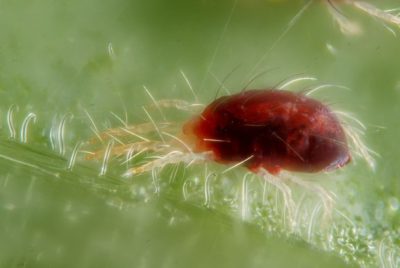

It takes a lot of effort to get rid of a spider mite. It is worth noting that this parasite is a microscopic animal, therefore insecticides are useless... The algorithm of actions is as follows:
- Arrange a warm shower for the plant with laundry soap - this process destroys 50% of the entire population of the parasite.
- Rinse everything that stood next to the plant, disinfect the windowsill and window, wash the curtains.
- Spill the plant and pack in a plastic bag for 3 days. The mite does not tolerate high humidity.
All these actions will help only at the initial stage of the disease, if the web has entangled the entire plant, it will have to be destroyed.
Alternaria
Often the plant is infected with this disease through the soil., you can cure it like this:
- change the soil in the flowerpot;
- process geraniums with Ridomil Gold or Skor;
- ventilate the room daily;
- loosen the soil;
- apply an optimal moisturizing regime.
Insects can be removed in the following ways:
- Wash the flower with soapy water.
- Wipe with a cotton swab dipped in an alcohol solution.
- Treat with drugs.
Reasons for development
If the manifestations of chlorosis are noticed in time, the plant can be successfully cured. To do this, you need to know the causes of the disease, and they can be as follows:
- Lack of minerals and trace elements in the diet. Most often, the soil lacks iron, zinc, magnesium, sulfur, lime.
- Infection carried by insects, fungal spores, various viruses and microorganisms.
- Root damage, poor soil condition, lack of drainage and other germination defects.
- Hereditary chlorosis.
Varieties of midges in flowers and flower pots
Flower midges can be attributed to insects of the Diptera family. They have about 2000 subspecies. Let's list the most common ones.
White midges, called whiteflies or scale insects, look very similar to aphids. Of indoor plants in pots, soft fuchsia or begonia leaves are preferred.
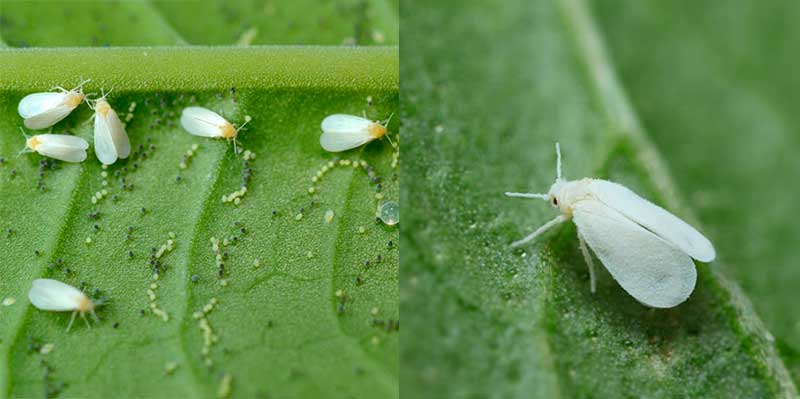

White flies on home flowers are whiteflies, also called "scale insects"
Black midges that live in home flowers are called sciarids, and another name for these parasites is mushroom mosquitoes. They prefer to live near the root system of flowers such as aloe, Decembrist, ficus, azalea. For a person, this type of insects creates considerable inconvenience in an apartment - they get into food or drink. By settling in the soil where the flower grows, they make it dense, impermeable to air, thus causing tremendous damage to the roots of plants.
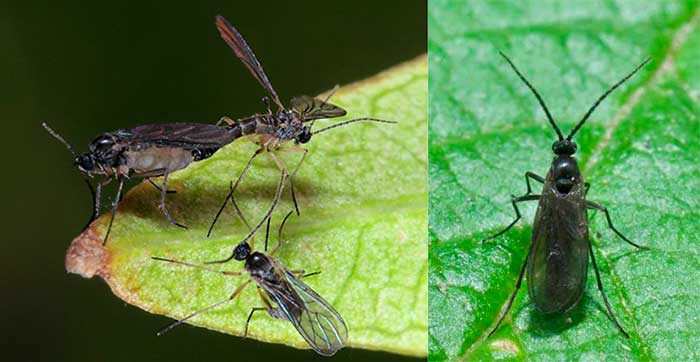

Black gnats on home flowers are called sciarids or mushroom gnats.
Podura (earthen fleas - white flies), the second name is springtails. These are jumping wingless parasites. You can see them in places where there is high humidity (bottom of the pot, wet pan, top of the ground with a plentifully watered flower). White sucker larvae damage the roots of plants. They differ from other parasites in their speed and jumping in the event that they want to touch them.
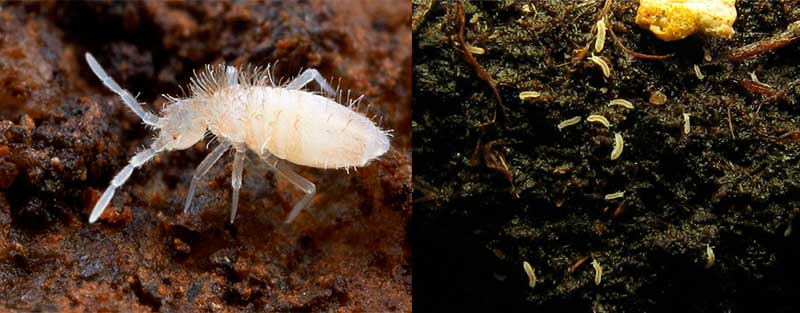

White insects that are found in the soil of home flowers - podura or springtails
Disease types
There are many types of leaf chlorosis, the difference of which is reflected in the lack of a certain element in the plant's nutrition. To determine which microelement is missing, one should focus on external signs.
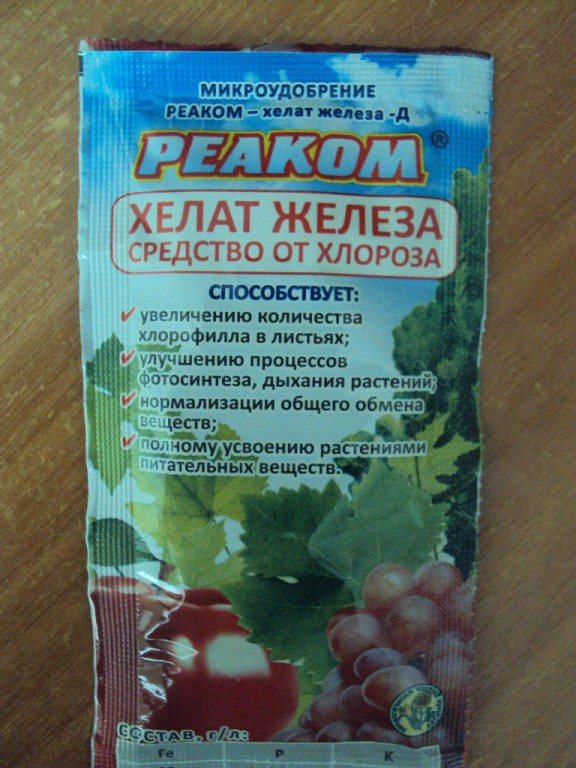

Iron chlorosis. The most common type of chlorosis with identified iron deficiency. It is characterized by yellowing of the leaf plate. At the same time, the color of the veins remains saturated and bright. Young shoots are primarily affected. Calcareous soil can be the cause of this disease.- Magnesium chlorosis occurs when there is an insufficient amount of magnesium, for example, due to the sandy type of soil. The disease manifests itself in the same way as with a lack of iron, but it is not young leaves that suffer first, but mature ones. The symptomatology in this case is similar to that of mosaic disease. The leaves gradually begin to change color. The edges are affected first, then the entire plate. Greens often take on an orange or red tint.
- Sulfur chlorosis can appear from a lack of sulfur in the diet. In this case, the veins of the leaves turn yellow or turn white. Then the color of the whole sheet changes.
- Nitrogen chlorosis. The first signs are the whitened veins of the lower leaves. Further, discoloration captures the entire leaf plate in a systematic manner, starting from the middle. The lower leaves wilt and fall off. Lack of nitrogen can be caused by excessive ash application or increased acidity. The reason may be the introduction of not yet decomposed organic matter into the soil.
- Zinc chlorosis. This disease manifests itself in the form of specks, first spreading to the lower row of leaves. Most often, the plant is exposed to disease in the spring due to excess nitrogen in the soil.
- Calcium chlorosis causes plant growth to stop, flowers, buds and ovaries fall off. On tomatoes, "top rot" appears in the form of round necrotic spots.
Related Videos
We offer you to watch a useful video about diseases and pests of pelargonium, their prevention and treatment:
We offer you to watch a video about pelargonium pests:
If you find an error, please select a piece of text and press Ctrl + Enter.
Almost all growers call pelargonium from the geranium family room geranium. There is also street geranium, which differs from pelargonium in the shape of leaves and flowers, resistance to frost, breeding method and habitat. You can find out about the difference between pelargonium and geranium on our website from the article "What is the difference between geranium and pelargonium".
Indoor and outdoor geraniums are always dotted with flowers that grow alternately and emit an aroma that cannot be confused with the smell of other flowers. Their leaves are also endowed with a special aroma. In this regard, both plants are used by the cosmetic industry to obtain essential oils. but these plants should not be left unattended during development, vegetation and flowering, as they may be susceptible to disease and damage from pests.
But geranium diseases (see photo) and their treatment are similar for both indoor and outdoor representatives. This will be discussed in detail in this article, as well as measures to prevent diseases.
Plants susceptible to chlorosis
All plants are susceptible to lack of nutrients. This also applies to domestic crops, and those that grow in the open field, and even aquarium. But some plants are the most susceptible and, if not taken urgently, can die from chlorosis.
Most prone to disease:
- hydrangea;
- hibiscus;
- various citrus fruits;
- ficuses;
- azalea;
- gardenia;
- primrose;
- raspberries and currants;
- apple and pear;
- roses;
- petunias;
- tomatoes;
- cucumbers;
- grapes;
- Strawberry.
Physical impact on whitefly - what does it boil down to?
A proven remedy for whitefly is mechanical traps. With their help, you can get rid of adults capable of flying. You can make a trap with your own hands from scrap materials.
For a simple sample, you will need small plywood sheets or sheets of cardboard. They must be painted in a color that attracts insects (white or yellow), smeared with castor oil, a mixture of honey and rosin. The baits are laid out near the insect habitat. For example, if they settled on fuchsias, then the bait is laid right there - on the windowsill.
As an option for a whitefly trap, simple fly strips that are fixed close to infected plants are also suitable.
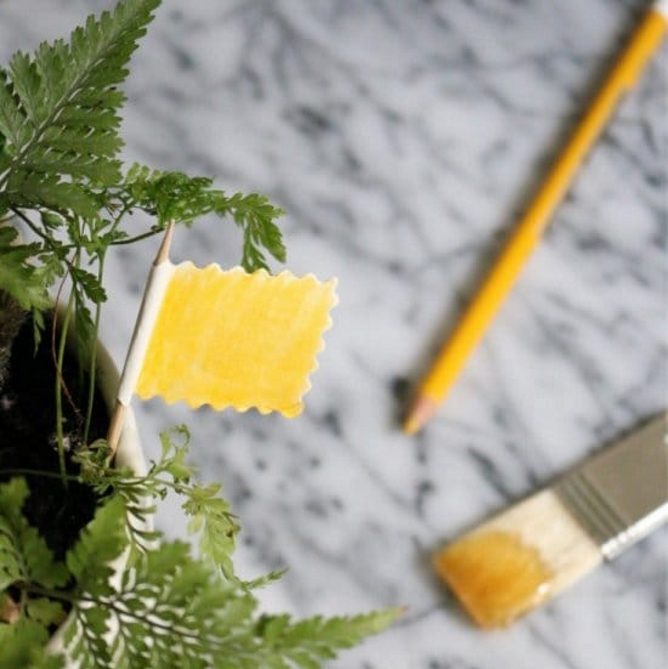

Prevention
In order to prevent plant diseases, certain measures should be taken. This concerns the correct preparation of planting, optimal timely care of the crop. In order to take the necessary measures, it is important to know the types of chlorosis. This disease is:
- non-infectious, associated with a lack of microelements of a certain type. If it is not possible to determine which element of the culture is not enough, complex ready-made fertilizers with a balanced combination of microelements should be used. These drugs include "Zdraven", "Uniflor Micro", "Florist Micro".
- infectious. In this case, special attention should be paid to disinfection. This applies to seeds, soil, tools. Before planting a crop in the soil, it is advisable to add biofungicides as a preventive measure. They are also treated with planting material to increase stability.
Garden tools should be rinsed with boiling water and wiped off with a cloth dampened with alcohol.
To reduce the risk of chlorosis, you must:
- choose the right substrate for plants.The soil must be water-permeable and lightweight. ;
- monitor the soil, pay attention to the acidity of the soil. A shift towards an alkaline environment greatly increases the risk of chlorosis. Do not allow alkalization;
- water the plants periodically with acidified water. For this, several grains of citric acid are dissolved in 1 liter of water.
Geranium medicines
Geranium not only pleases with the beauty of its flowers and leaves, but also benefits. It is used as part of drugs that destroy bacteria, for the treatment of runny nose and purulent wounds, the smell of the plant soothes the nervous system.
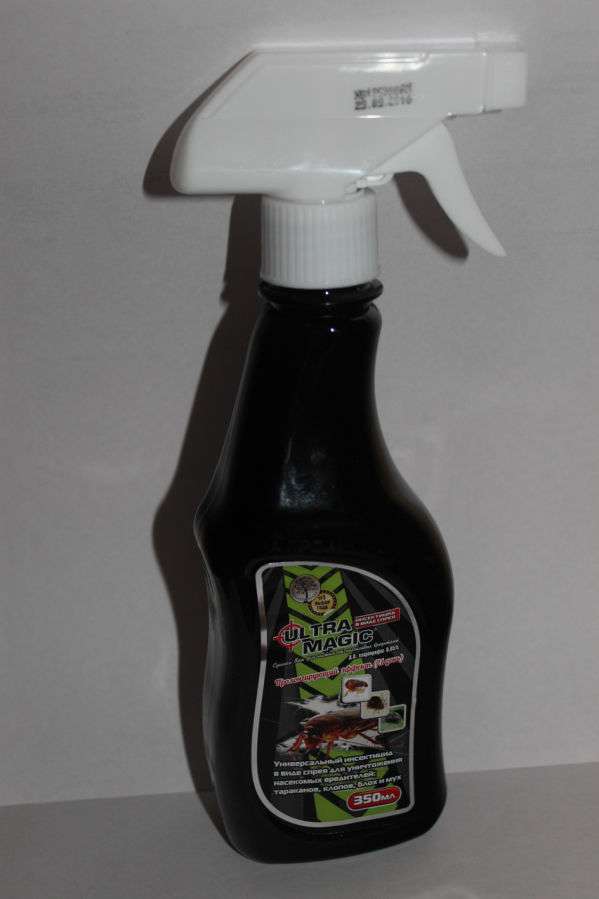

To save your favorite flower from problems, the following medications are used for it:
- Aspirin - if insects are found. Spraying the leaves with a solution: dissolve one tablet in 8 liters of water. The procedure is repeated after 20-25 days.
- Marathon - for the destruction of insects. The solution is poured over the ground a few days after planting.
- Messenger. The product enhances the immunity of geraniums.
- Monterey. The agent is sprayed to destroy the caterpillars on the leaves and trunks.
Treatment
If the plants are already sick with chlorosis, preventive measures will not be enough. Of course, you will have to change the soil and use it for watering acidified water, but, in addition, it is necessary to add iron in a chelated form to the diet. It is easy to digest and is suitable even for diseased plants.
The health of the plant is restored after root application and spraying with the following preparations:
- Agricola;
- Antichlorosin;
- Ferovit (Nest M);
- Ferrylene (Valagro);
- Iron chelate for plants (Mikom-reaction);
- Antichlorosis (Master Color);
- Micro-Fe (Orton);
- Brexil-Fe (Valagro).
Iron chelate can be sprayed on the leaves or applied to the soil. In the first case, the action of the drug manifests itself much faster. Useful substances penetrate into the plant tissue during the day. When watering, this happens only after three days.
In addition, for the treatment of non-infectious chlorosis, you can use not only ready-made preparations, but also those made by yourself. At the same time, for each species, it is necessary to select individual feeding with an increased content of the substance necessary in this case.
To eliminate magnesium chlorosis, you should use drugs such as dolomite flour, potassium magnesium, magnesium sulfate, Mag-Bor. As improvised means wood ash is recommended.
The lack of sulfur can be replenished with special sulfur-containing fertilizers. Most often they are complex and contain, in addition to sulfur, other substances useful for plants: nitrogen, potassium, magnesium, etc.
Nitrogen deficiency is eliminated with mineral fertilizers, which are based on nitrogen. They can be nitrate, ammonia, amide. The most popular are ammonium nitrate and ammonium sulfate.
For feeding vegetable crops, nitrate fertilizers, calcium and sodium nitrate are mainly used.
To nourish plants and replenish some minerals, homemade formulations can be used:
- ash, ash - an excellent fertilizer for flowers, rich in iron, magnesium, phosphorus and other trace elements. Ash obtained from burning wood is used for feeding. Ash from incinerated household waste, especially polyethylene, must not be used. Dry ash is mixed with a substrate and, when transplanting plants, is added to the topsoil. You can prepare the following watering solution: dissolve a tablespoon of ash in a liter of water.
- The minerals necessary for plants are contained in the water left after washing the cereals. With such water containing silicon, magnesium and phosphorus, it is useful to water shrubs and flowers from time to time;
- you can prepare onion broth according to the formula: about 50 grams of onion husks per liter of water. The broth should be boiled and insisted for several hours. The resulting cocktail is used for watering and sprayed.
Home fertilizers, like ready-made ones, are used in small quantities with caution, carefully observing how the plant reacts to feeding.
Fight against parasites
Improper care makes pelargonium weak, then various insects "attack" it. Geranium pests and control measures:
- Root worm... Waterlogged soil is a comfortable environment for the parasite, and geranium roots are its favorite food. After checking the root system, you need to cut off the areas with the worm with a clean knife, and hold healthy roots for 2-3 minutes in a container with hot water, then dry and sprinkle with charcoal powder. The bush is transplanted into another pot with sterile soil. The first pot must be doused with boiling water, treated with a sterilization agent, like a garden knife.
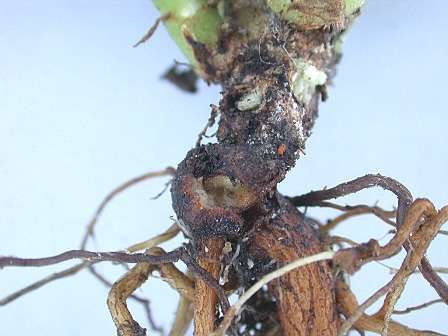

- Mealybug. Sometimes a novice florist cannot understand who is eating geranium leaves on the window. If white sticky lumps appear on the leaf blades and other parts, then this is a mealybug. A sick flower should be isolated and manually removed the parasite, and then sprayed with soapy water and alcohol. The advanced stages of parasite damage require treatment with insecticides: Aktellik, Aktara or Fufanon.
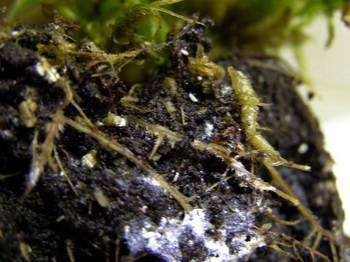

- Spider mite. A spider mite on a geranium gnaws at the skin and sucks juices from leaves, stems, buds and petals. It spreads gray rot and viruses. All damaged parts are removed from the plant, removed from the pot and the stems and leaves are washed thoroughly under a warm shower with a soft sponge. After that, they are treated with a thick soapy solution and do not wash it off for a crescent, covering the bush with a bag. Then rinse thoroughly with warm water. Pots and pallets, stands for flowers are subject to processing with boiling water. Ticks can also be on window sills, frames, in the crevices of windows, so they should be washed with a solution of water and laundry soap, then treated with alcohol, and the curtains should be washed. The tick does not like the tincture of yarrow and garlic. To prepare an infusion of yarrow, grind 400 g of a dry plant and pour 1000 ml of boiling water. After 10 minutes, dilute with an additional 5 liters of water. Insist in a dark place for 2-3 days and process the bush 3 times with a break of several days. For garlic tincture, you will need 180 g of the product per 1000 ml of warm water, the composition is allowed to brew in a dark place for 7-8 days, then the bush is treated by mixing 1 liter of water with 10 ml of tincture. Naphthalene, dichlorvos or turpentine are often used: naphthalene tablets or cotton wool moistened with a poisonous agent are placed next to the pot, in a pallet, then the bush is covered with a hermetically sealed polyethylene bag for 2 days, fixing the bag with rubber bands or clothespins. The parasite will die during this time.
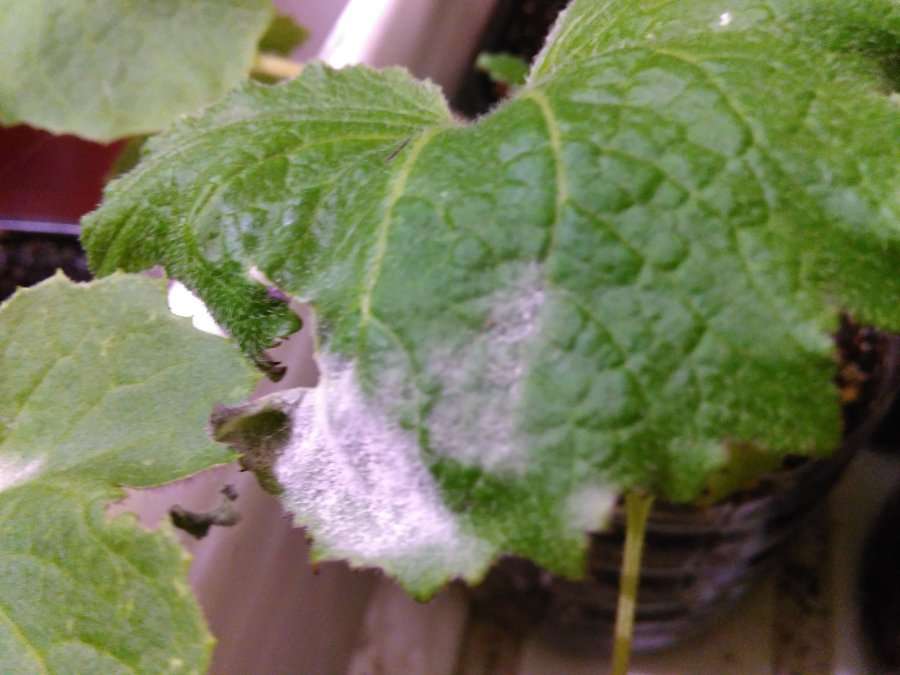

- Aphids on geraniums how to fight at home: shoots and leaves will curl and deform, they need to be cut or removed by hand.
- Whitefly.She develops a vigorous activity on the back of the sheets. Remove it with Aktra.
- Caterpillar.It lays the larvae and makes many holes in the leaves. Senpai or Lipidocide preparations will help rid the flower of parasites.
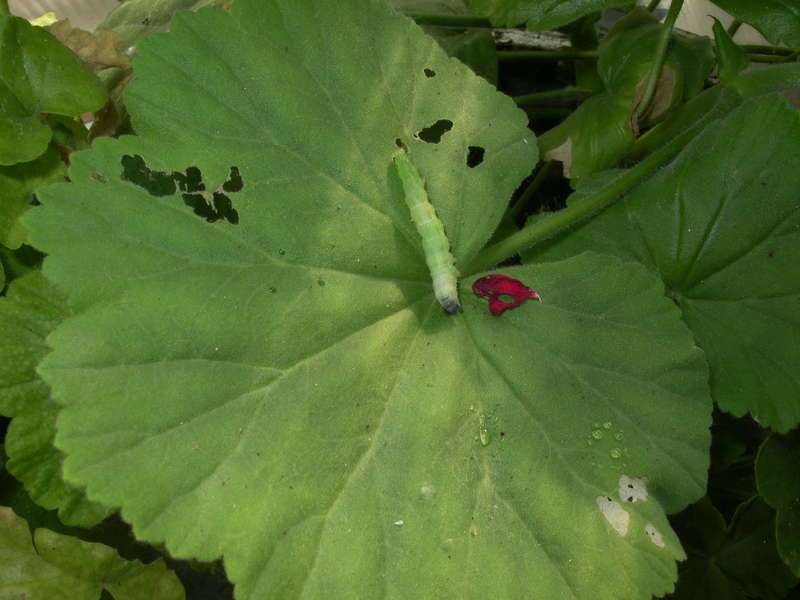

Ferovit
Ferovit is a good remedy for iron deficiency in plants. They are treated not only with flowering plants, but also with fruit crops, and also sprayed with seedlings.
Foliar treatment is carried out with this drug. It is important to observe the dosage indicated in the instructions for use of ferovit for plants. Excess iron can lead to poor absorption of manganese and phosphorus. The concentrate is usually sold in small ampoules. Iron chelate can also be found in powder form.
To prepare a spray, it is best to use boiled water. Alkali in hard water can react with iron. This will weaken the effect of the drug.
It is necessary to spray the plants in cloudy weather, while taking into account the possibility of rain. Ferovit should be treated three times per season. In spring, it will help to form beautiful foliage, in summer - to maintain strength, and before hibernation, it will strengthen the immune system.
Features of flower growth
Geranium can be called an unpretentious flower.She loves a lot of sun, warmth and soil that allows air and water to pass through. The content conditions are as follows:
- good watering in summer and moderate in winter;
- bright sunlight, but no direct rays;
- warm air;
- loose, well-drained soil;
- moderate fertilizing with nitrogen-phosphorus-potassium fertilizers;
- slightly acidic soil;
- pruning and pinching to form a bush.
Lack of flowering
Marigold diseases - why leaves dry
In order for a plant in an apartment to delight its owner with a beautiful flowering, it needs the correct conditions of detention, violations of which lead to the absence of buds. There may be several reasons:
- Lack of fertilizers;
- Improper watering;
- The pot is not suitable for the plant;
- Pruning is not carried out in a timely manner. With active growth and excessive thickening, pelargonium will give only leaf plates. You need to prune in the spring or autumn months;
- Lack of lighting;
- Lack of the right conditions in winter. The temperature indicator during the cold season should be up to + 16 ° C. The plant should receive light at least 5 hours a day. Watering is carried out in small portions of liquid.
Consequences of the defeat of aphids
At the initial stage of infection with a pest, geraniums become lethargic, lose their vitality. Leaves on young shoots are deformed and painful. Later, if treatment has not been started, the aphids spread throughout all the ground parts of the plants: the shoots become as if "double" from hundreds of insects clinging to them, the leaves curl, dry out and die off, the buds crumble, and those that manage to bloom have strongly deformed petals ... If at this stage the plant has not been treated with anything, the aphid will finally draw out all the juices from it, as a result of which it will die.
What to do if the flower is sick: detailed instructions
The main condition is to create a quarantine so that the disease does not spread to other flowers. A close inspection of the top and bottom leaves, stem, flowers, soil and condition assessment can provide a lot of information about what happened to your geranium.
Rust
If the flower is affected by rust, it is necessary:
- transfer the geranium to a cool and dry place;
- reduce watering and stop spraying;
- remove diseased leaves;
- treat the plant with Topaz.
Fungus
If the symptoms point to the fungus Botrytis, you will need to:
- remove the affected plant fragments;
- treat it with systemic fungicides;
- reduce watering;
- loosen the soil.
Ring spot
If a ring spot is found, it is unlikely that it will be possible to save the flower. The disease is viral and affects the whole plant, therefore, the forecast is most often unfavorable, and it is better to destroy the plant together with the ground.
Spider mite
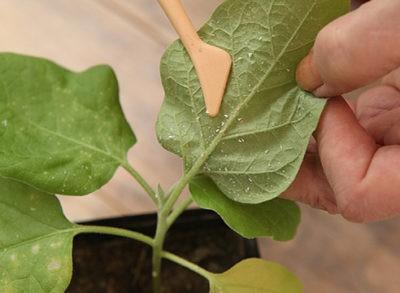

Getting rid of a spider mite is possible if the owner is willing to devote a lot of energy to it. The tick is a microscopic arachnid, not an insect. Fighting it with insecticides is useless.
How to get rid of spider mites:
- wash the flower with warm water with laundry or tar soap - after that, half of the tick population will be destroyed;
- disinfect the window sill and everything that was there, rinse the windows, wash the curtains;
- water the geranium well and wrap it tightly with polyethylene for three days - the mites will die from high humidity.
To enhance the effect, some gardeners recommend tincture of garlic in water, followed by wrapping: cotton swabs are moistened with caustic solution and laid out in 2-3 for each pot.
Also spraying with aspirin (1 tablet per 1 liter of water) are considered very effective. You can do without wrapping, using insectoacaricidal preparations every 2 weeks. However, they only affect adults. To stop the appearance of eggs, it is necessary to use hormonal drugs (Clofentesin and Flufenzin), and for a more powerful effect, combine them with any biological product.
If everything has been tried, and the pest does not give up, you can let a natural enemy on it, who will gladly exterminate ticks from small to large, but will not touch either your flowers, or animals, or yourself: this is phytoseiulus. In a day, he destroys up to five adults or up to a dozen eggs, and left without food, dies. You can buy it at a garden center, flower shop, or online.
Gray rot
How to cure gray rot:
- treat geraniums with systemic fungicides to destroy the fungus;
- reduce watering, cancel spraying, reduce air humidity.
Alternaria
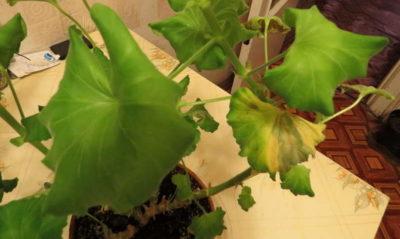

Infection with this disease occurs through the soil. Treatment:
- replacement of land and pot;
- treatment of the plant with Ridomil Gold or Skor preparations;
- good ventilation;
- loosening the soil;
- optimal watering regime.
Insects
If the geranium is overpowered by parasitic insects, they can be removed in one of the following ways:
- rinse the flower in a soapy ash solution;
- wipe the leaves with alcohol - this must be done quickly so as not to burn them;
- treat with special insecticides;
- replace the soil.
Rust
The disease manifests itself with the appearance of clearly outlined yellow spots on the upper part of the sheet. On the reverse side of the leaf, brown pustules form (in the same places where the upper spots are located). If the disease progresses, the leaves turn yellow, dry and fall off. Geranium does not bloom.
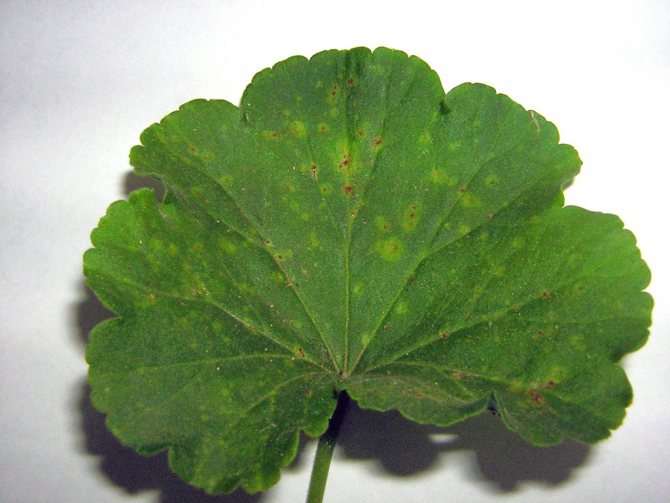

Why does this disease occur? It is transmitted through infected plants both by air and by water. If the care is improper (too warm and too humid), this disease causes severe damage to large plantings.
As soon as the first signs of rust appear, it is necessary to reduce the level of humidity in the air, stop spraying the plants, and remove the infected leaves. It is also necessary to treat it with systemic fungicides on time (Topaz is perfect).
Photo
And here you can see a photo of a geranium affected by diseases:
Growth features
Geranium is generally unpretentious. She loves warmth, sun and simple soil. The conditions for its content are simple:
- moderate watering;
- bright sun (9 out of 10 points);
- warm air;
- good drainage and loosening of the soil;
- nitrogen-phosphorus-potassium fertilizers in equal proportions and very small quantities;
- not very nutritious soil with slightly acidic pH;
- weeding;
- periodic cutting of the upper shoots, removal of dead flowers and leaves.
Preventive measures
Geranium is resistant to infection, but preventive measures can help avoid problems. Observe the behavior and condition of the plant, while it is worth maintaining:
- optimal soil moisture;
- comfortable temperature for the plant;
- good lighting;
- correct and timely feeding.
Despite the fact that geranium is an unpretentious plant, it needs to be looked after and constantly taken care of. If you are vigilant, you can safely avoid diseases or cure an infection at an early stage.
If you find an error, please select a piece of text and press Ctrl + Enter.
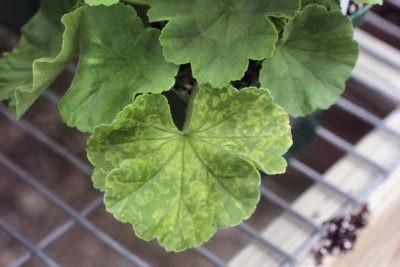

Blooming and scented geraniums adorn many windows and balconies thanks to the variety and beauty of flowers.
In general, this is a rather unpretentious plant, but sometimes it suddenly starts to hurt, spots appear on its leaves.
Pelargonium resuscitation: home care
There are situations when geranium begins to fade very quickly, literally before our eyes.In this case, the plant needs immediate recovery without finding out the reasons for such wilting. There are several effective ways to resuscitate pelargonium.:
- washing and removing dry rotten roots;
- cutting off rotten and dry leaves, up to their complete removal;
- disinfection in Epin's solution for about 1 hour;
- soil sterilization;
- transplanting into a warm and moist substrate;
- moving the plant to a bright, slightly cool place without drafts;
- exclusion of watering, spraying with warm water in warm weather;
- feeding with Epin (once a week);
- gradual transfer of geranium to the sunny side;
- when new leaves appear, transfer to standard care.
Geranium rarely gets sick when it receives enough light, warmth and quality care. If, nevertheless, some disease affects pelargonium, then it is not worth delaying the treatment. Prevention and timely treatment of geranium will help to completely cure it.

